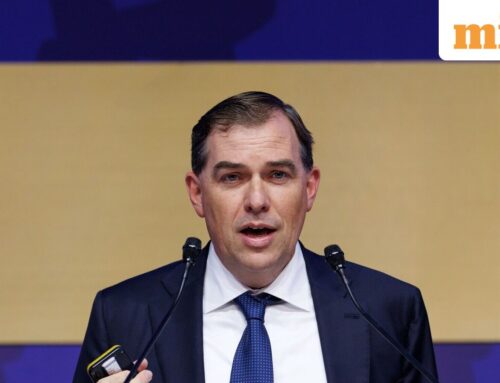e.l.f Beauty Shares Plunge. Should Investors Buy the Stock on the Dip or Stay Away?
November 8, 2025
The market’s reaction to management’s guidance looks overly harsh.
It has been a roller-coaster ride for shareholders in e.l.f. Beauty (ELF 3.79%) over the past year. After a steep drop early this year and a strong rally following the company’s May announcement of its plan to acquire Rhode, the stock was close to even for the year heading into its fiscal 2026 second-quarter report this week. But shares plummeted after it reported its results on Wednesday, and the stock is now down more than 40% on the year.
Is the cosmetic company’s latest dip a buying opportunity or should investors stay away?

e.l.f. Beauty
Today’s Change
(-3.79%) $-2.90
Current Price
$73.64
Organic sales sag
When e.l.f. Beauty reported its fiscal 2026 Q1 results, it did not provide full-year guidance due to uncertainty over how President Donald Trump’s tariffs would affect the business and the broader economy, and there certainly seemed to be a disconnect when the company issued guidance this time around. It is also worth noting that, historically, e.l.f. management has tended to be very conservative with its guidance.
For the fiscal year (which will end in March 2026), the company expects revenue to grow by 18% to 20% to a range of $1.55 billion to $1.57 billion, with adjusted EPS of between $2.80 and $2.85, down from $3.39 a year ago. Management projected that adjusted earnings before interest, taxes, depreciation, and amortization (EBITDA) would rise slightly from $297 million in fiscal 2025 to a range of $302 million to $306 million. Those numbers were all well below analysts’ consensus expectations.
Rhode is expected to contribute $200 million in revenue this fiscal year, and have a $300 million annual revenue run rate, which would provide the company with about 40% growth. Organic sales are projected to rise by between 3% and 4%. Shipments this year are expected to be lower than consumption after the company gained shelf space at Target last year and began selling its wares at Dollar General locations.
In its fiscal second quarter, which ended Sept. 30, its sales rose 14% year over year to $344 million, which missed the analysts’ consensus figure of $366 million. Rhode added $52 million to e.l.f.’s sales, but organic sales were down about 3%. The company said it temporarily held back shipments to some retailers that had not been quick to implement its $1 price increase in August, which impacted revenue in the quarter. The company said that issue had been resolved, and that it is shipping normally again.
Adjusted earnings per share (EPS), meanwhile, dropped from $0.77 a year prior to $0.68, but easily surpassed the $0.57 consensus estimate. Adjusted EBITDA fell by 4% to $146.8 million.
Tariffs did impact the company’s profits, as about 75% of its products are made in China. It has seen an average tariff of about 60% for the year, compared to 25% last year. That led to a 165 basis point decline in gross margins to 69%. Selling, general, and administrative (SG&A) expenses also climbed, accounting for 56% of revenues versus 53% last year, as the company said it continued to make investments in employees and infrastructure.
Management also noted that it plans to ramp up marketing spending to between 27% and 29% of net sales in the second half of fiscal 2026, up from 23% in the first half.

Image source: Getty Images.
Should investors buy the dip?
Given its large guidance miss, it’s fair that the stock fell. However, the market’s reaction does appear to have been a bit extreme, as the long-term story for the company appears to be intact. The combination of e.l.f.’s typical conservative guidance, along with a bit of a mismatch in revenue versus consumption trends, explains much of the difference between analysts’ expectations and management’s outlook.
The company has been one of the strongest growers in the cosmetics space over the past few years, taking massive market share, and its namesake brand still has solid growth opportunities. It needs to get back to innovating, but it will see some shelf space gains at Ulta Beauty stores next spring, and its international opportunity remains robust.
Meanwhile, its opportunity with Rhode is still massive. Between increasing Rhode’s product assortment and its distribution, e.l.f. has plenty of room to grow the brand.
Today, e.l.f. stock trades at a forward price-to-earnings ratio (P/E) of 17.5, based on its fiscal 2027 estimates, and a forward price/earnings-to-growth (PEG) ratio of just 0.3. Generally, a stock with a positive PEG ratio that’s below 1 is considered undervalued. Even if its earnings growth estimates dip somewhat, the stock is not pricey.
Yes, the company has work to do, and it needs to do a better job of controlling costs, but this recent decline looks like a great opportunity to add shares and profit from the market’s overreaction.
Search
RECENT PRESS RELEASES
Related Post



